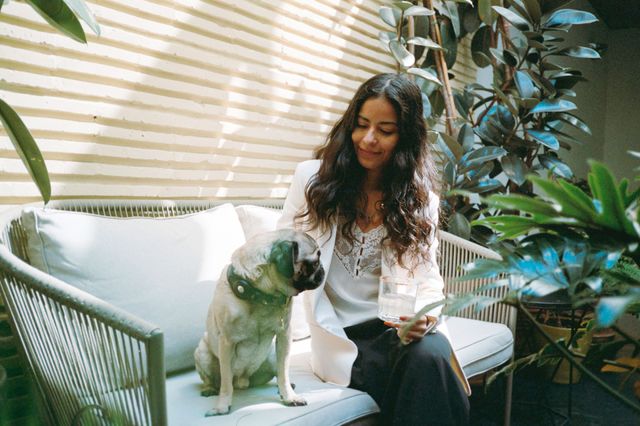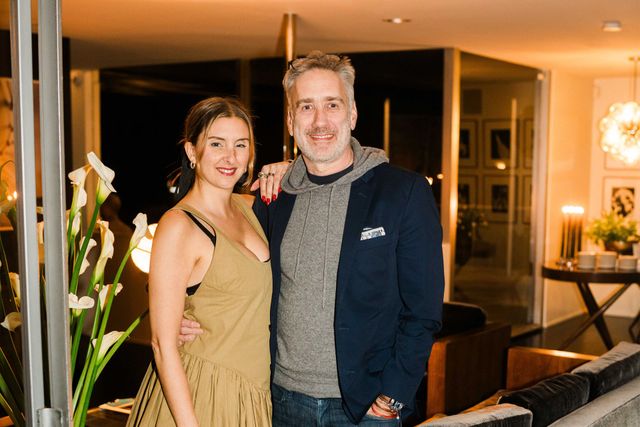Conversation with Gioele Romanelli of Casa Flora
- Category
- Q&A
- Written by
- Roshan McArthur
- Published
- October 2, 2020
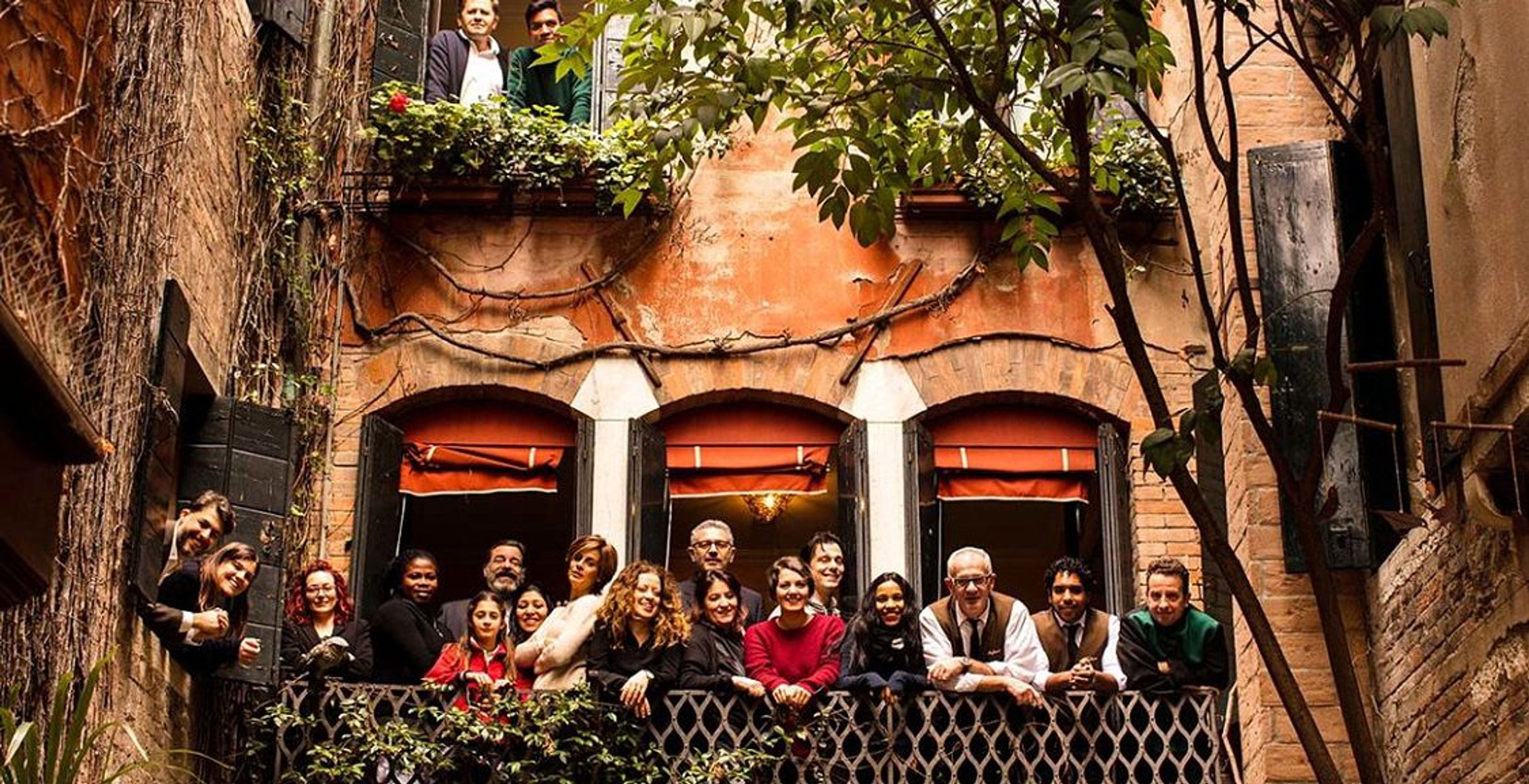
For Venetian hotelier Gioele Romanelli, this has been a very challenging year. Last November, the city he grew up in – and loves passionately – was hit by its annual acqua alta, or high tide, bringing with it the worst flooding in half a century. Then, just over two months later, while Venice was celebrating its world-famous Carnival, the region was hit hard by the coronavirus and forced into lockdown. Life as they knew it stopped.
Gioele’s family has been part of the fabric of the city since 1964, when his grandparents Diana and Alessandro and father Ruggero opened Hotel Flora. Gioele and his wife Heiby continued the family tradition, opening their small “ethnic-chic” hotel Novecento in 2002, then adding a three-bedroom apartment rental, Casa Flora, next door to it in 2017. It’s a highly innovative space that celebrates the community and culture of Venice.
Emerging from the flood and the lockdown, the Romanelli family are not disheartened. In fact, they have been emboldened in their vision for what they describe as “maybe the most beautiful city in the world.” Venice has been struggling for many years with overcrowding, a deluge of tourists taking over the city, causing a loss of soul as well as pollution and damage to cultural monuments. Their vision is of a more personal Venice, somewhere that favors local businesses over multinationals, with fewer giant cruise ships dominating the shoreline.
We caught up with Gioele to find out more.
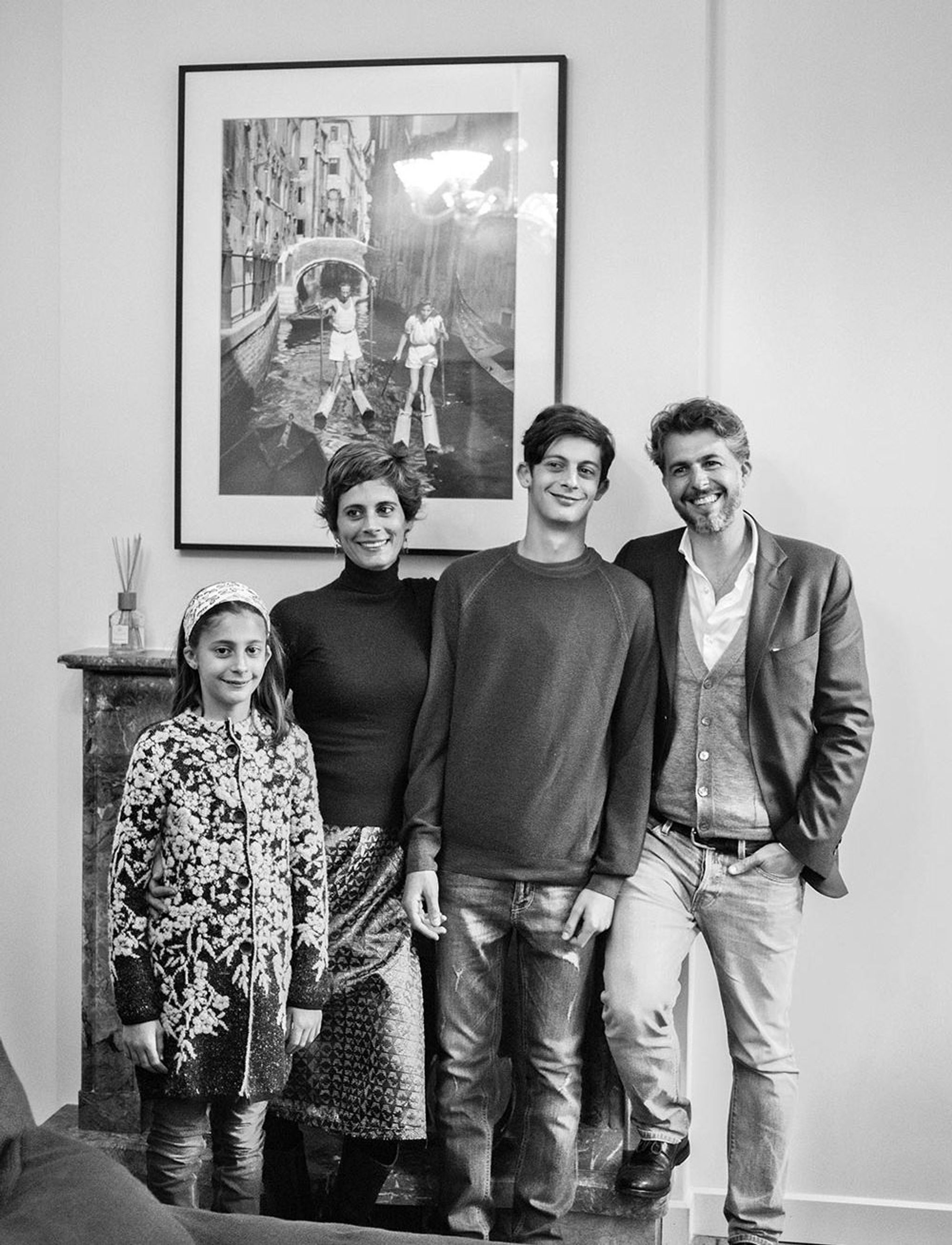
WE WERE GOING TO DO THIS INTERVIEW EARLIER IN THE YEAR, THEN THE PANDEMIC HIT. WE’RE SO GLAD YOU AND YOUR FAMILY ARE WELL. I KNOW IT HAS BEEN A VERY DIFFICULT TIME IN VENICE.
Gioele Romanelli: “It was. We started with high tide in November, and from that moment it was quite hard. Not especially because of the damages. We managed with those, but the communication worldwide was like it was a sort of catastrophe, and it seemed like Venice was practically under the water for months. That affected the entire business. From November to January, we had practically no reservations. People were really afraid about coming to Venice because the media said that it was flooded. So there was a miscommunication about that.
“After that, we were just starting to work again, a little bit back to normality in February, and that’s when we started with the Covid. It was really, really tough. It is really, really tough still now.”
YOU SEEM EXTREMELY CONNECTED TO VENICE. WHAT HAS IT BEEN LIKE EMOTIONALLY, SEEING THOSE THINGS HAPPENING TO YOUR CITY?
GR: “It’s heartbreaking. But it’s two different feelings. It’s been an opportunity to see the beauty of Venice, but this is in contrast with the entire economic situation of the city and our businesses.
“But there is a feeling that we shouldn’t go back to what was before because the overtourism was a problem. Our mission, our intention is to create a kind of consciousness in our guests, to inform them about what Venice really is, a real city with real needs and real residents. Now, we also have an opportunity to spend much more time with our guests, and at the same time they have this great opportunity, a unique opportunity to see Venice like no other time.”
WHAT ARE THE DIFFERENCES?
GR: “It’s quieter, it’s accessible, and there are no big ships, no masses of daily tourists. So guests can enjoy all the attractions, and see the real beauty of the square, the real beauty of the palaces because they are, we say, a portato di mano [at your fingertips]. You can see them, really touch them, really enjoy them. The loggia in San Marco, where there are the bronze horses, are now really accessible. The tower of San Marco, the Campanile, is also accessible… just to give you some examples. The canal is quieter. It’s a completely different perception of the city. On the other hand, shops are closed, and some restaurants are closed, which is difficult.”
BUT IT’S AN OPPORTUNITY?
GR: “Yes, to try to find the right way to live in the moment and take an opportunity from this tragedy, to rethink tourism in Venice. Venice is so important for the whole world, it’s a world heritage site so we have to be careful about what is happening here. There is a light opening on the city and what is going on in Venice – a requalification of the city.”

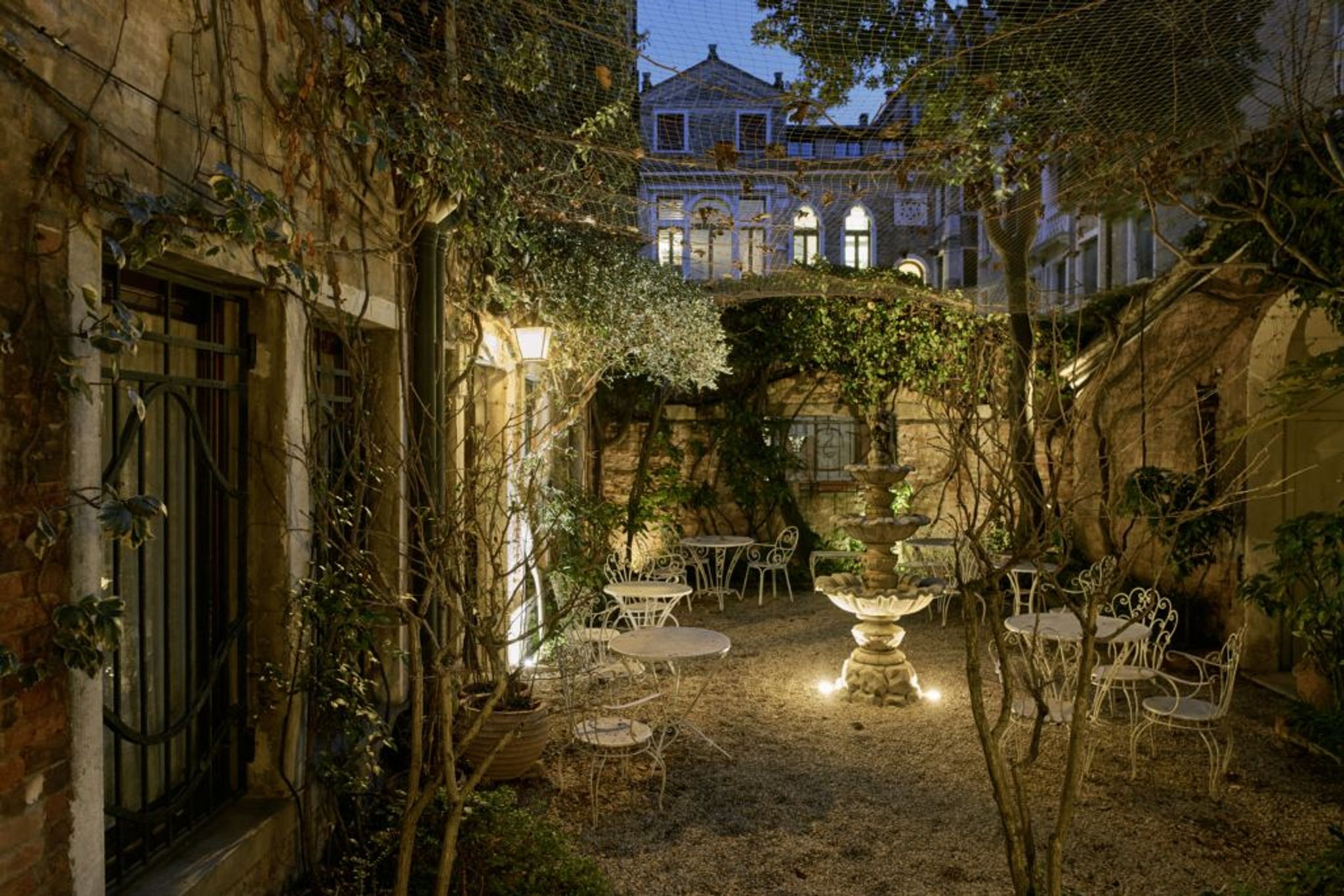
CAN YOU TELL US WHY YOU CREATED CASA FLORA?
GR: “We opened Casa Flora officially in May 2017, but it was a project that we started two years before that. We bought the flat in 2008. It was so connected with Hotel Flora, it was the next building, so it was interesting to develop something. First, we started with a private gymnasium for Venetians and for our guests. We always had this intention to create a sort of communication between guests and local residents. Then we decided to create an apartment, but not just an apartment to rent, something more personal.
“We got in touch with Diego Paccagnella, a talented art director who created a living showroom of Italian handcrafts in New York. We started to talk with Diego about the possibility of doing the same thing, but in hospitality. We organized a workshop and invited six young designers from three different universities to participate. We also invited three Italian companies which were partners of Diego in New York, one for the kitchen, one for the lighting, and one for the beds and sofa.
“Together with architect Matteo Ghidoni, we lived in the apartment for one week together during the Biennale, so there were lots of ideas and energy. The theme of the workshop was to create the ideal house for a guest in Venice. We enjoyed it very much, and they came up with very interesting ideas. A lot of energy was channeled into the project, so we decided that it could be something real.
“That’s how we started. From that moment, we involved many other companies, like Rubelli for the fabrics, Mingardo for the iron furniture, and Berto for the beds and the sofa.”
THE COLORS AND DESIGNS IN THE APARTMENT REFLECT THE VENICE YOU KNOW AND LOVE?
GR: “Absolutely. We were very lucky because interior designer Laura Sari participated in the project of making Casa Flora. Her idea was to create the three rooms with three different colors, and they are absolutely inspired by the colors of Venice. The colors of the walls of Venice, the colors of the water of Venice, the canals.
“With Casa Flora, all the people who participated in the project, no one wanted to be the real protagonist – we all participated together, we shared our ideas and intentions, there was a great balance among every single subject. This is why perhaps it worked.”

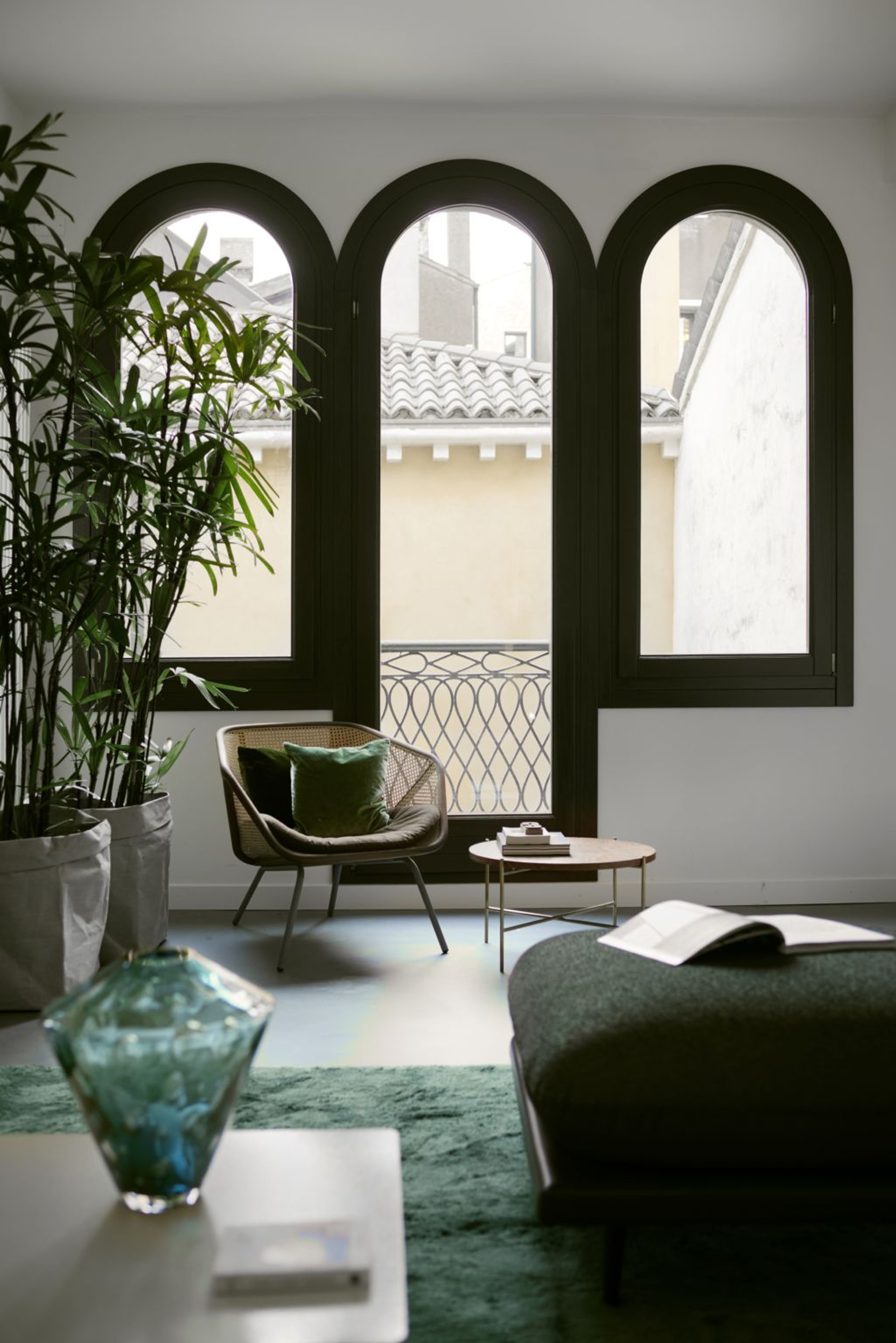
IT’S VERY DIFFERENT FROM WHAT YOU MIGHT EXPECT IN THIS VERY ORNATE CITY. WAS THAT INTENTIONAL?
GR: “We wanted to do something which could be contemporary but different at the same time – a sort of contemporary reinterpretation of a Venetian space. To recreate the idea of, for example, the social spaces in a Venetian palace. They’re very important, and they’re all connected.
“The students lived in Venice and absorbed the idea of the typical osteria, where you have the bancone or bar counter, and you share the space. So, in the kitchen, they put all these ideas of the Rialto, of the market, of the typical baccaro [wine bar] where you share cicchetti [finger foods] and you share wine. In the dining room, they wanted a huge table just to share the food – very convivial, a place that stimulates people to stay together and share the space, to open it to friends and the Venetians.
“The success of Casa Flora is when we have a guest we become friends with and who invites us for dinner – they feel like residents. That’s something that means a lot to us. That means that they really feel comfortable and really feel at home. They have the same needs that we have – to go to the market, to buy fish and vegetables, to cook and to invite, and to find the best bottles of wine, and the best local products.”
YOU ALSO OFFER CLASSES LIKE COOKING, WINE TASTING, VENETIAN ROWING, AND SHOEMAKING – WHAT WAS YOUR THINKING BEHIND THAT?
GR: “It was to tell people about personal projects that are going on in Venice. There are incredible handcrafts, artisans and people who live in Venice. So just to create this sort of consciousness, we invented these experiences for guests to feel Venetian.”

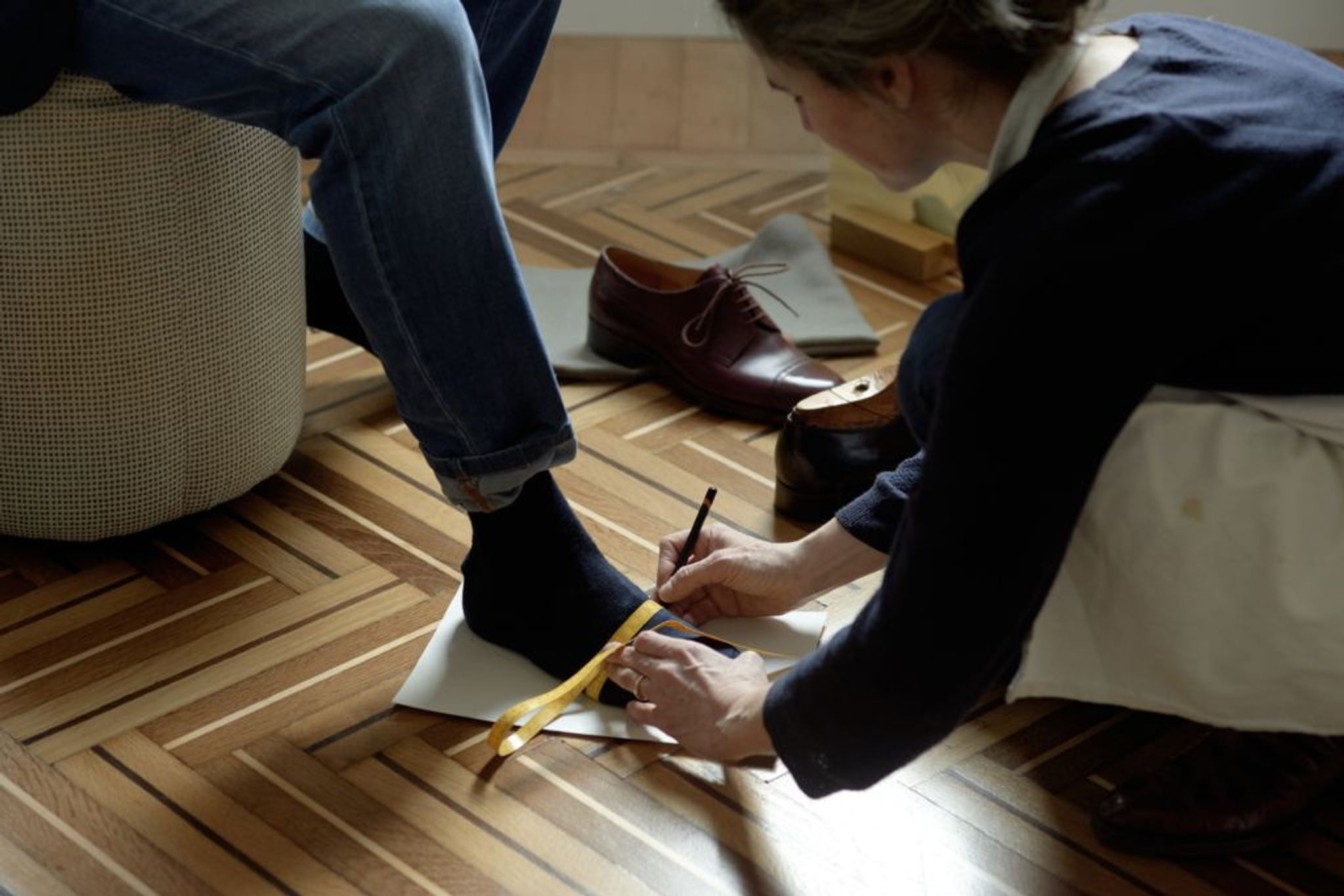
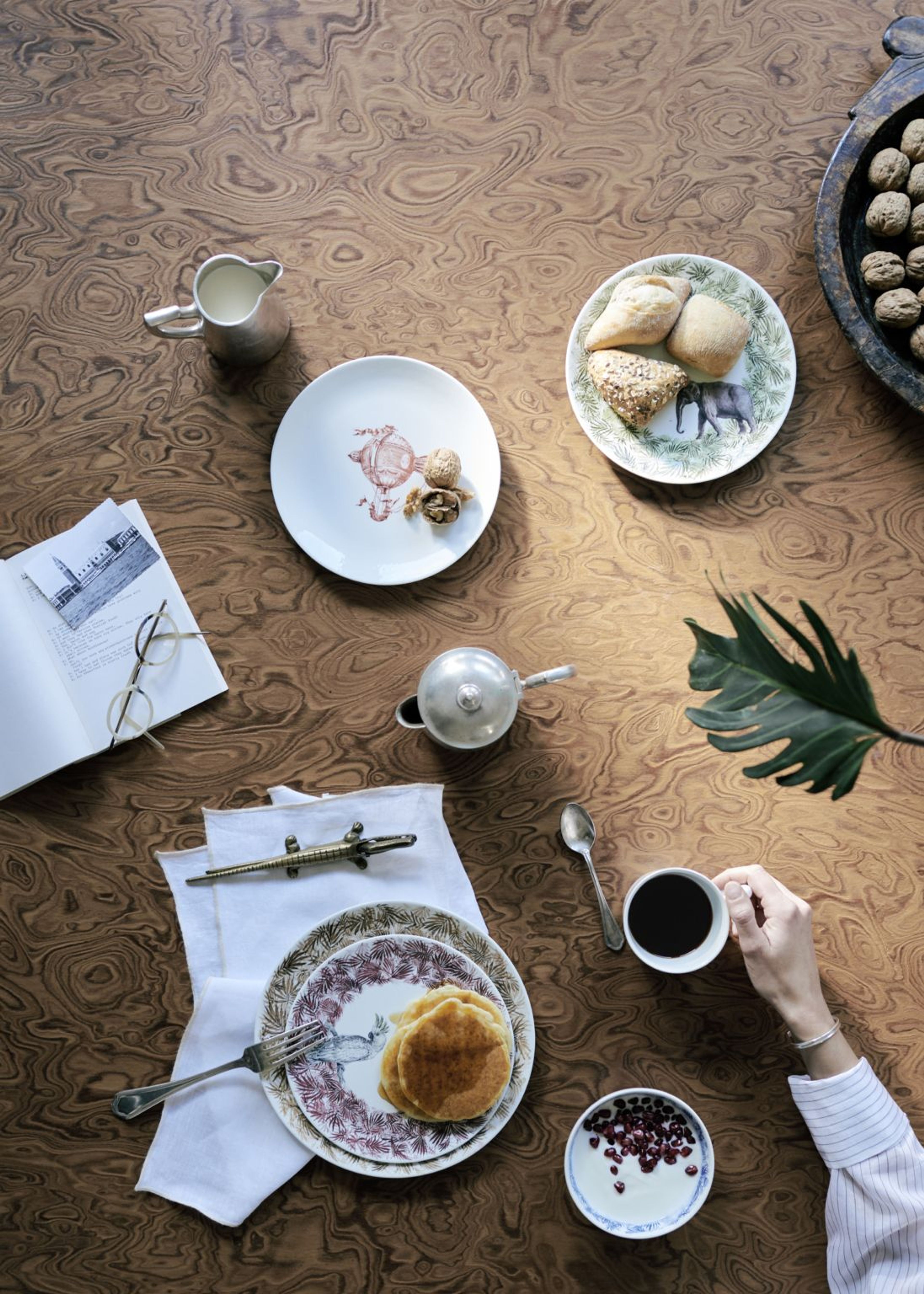
HOW DO YOU FEEL ABOUT CASA FLORA NOW?
GR: “We are very happy with it. Because we can really enjoy this contemporary corner of Venice, but at the same time it is connected to our other projects. Casa Flora is the most contemporary, but at the same time we were able to create a connection between the three spaces.
“This was a chance to respect the traditions, what my grandpa and father left, but at the same time look ahead and think about contemporary Venice – and new opportunities for Venice.”
To rediscover Venice and get to know the home that Gioele Romanelli and his team have created, book a stay at Casa Flora here.
